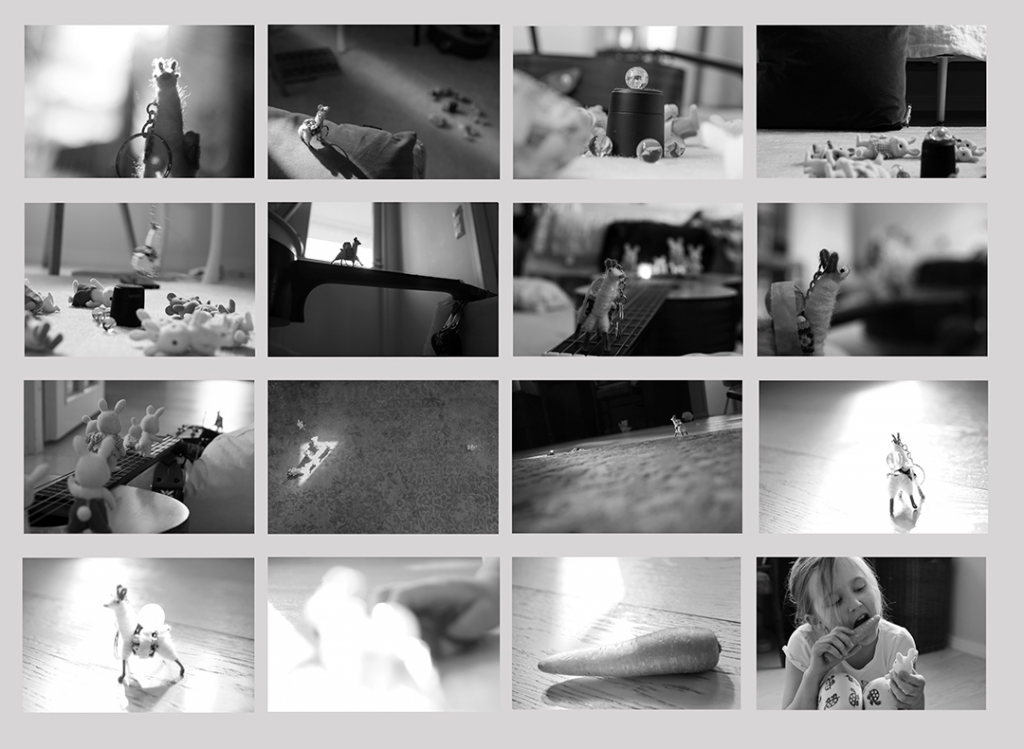Welcome to the 10 picture story challenge!
The idea is to create a fun, educational activity that helps everyone unleash their creative potential for photography and storytelling.
The challenge:
You need to try and tell a story using a minimum of 10 and maximum of 15 photographs . You MUST stay within your house/garden. As characters for the story, you can use anything from miniature toy figures to housemates and family members. You can also create more abstract characters using household items; stationary, tooth brushes, cups, hats, bottles, stones in the garden etc.

Once you have taken the images that you like, arrange them as a storyboard and write a a small description about what is happening in each photo. You can share the storyboard online using the hashtag: #10PicStory
You need to tell one story every week for the next 10 weeks. During this time, I will be uploading more instructions, information and videos to help you get better at visual storytelling at: https://www.rehanzia.net/10picstory/
To get really good at anything requires practice. Whether you shoot the same story over again or choose to photograph a different story is completely up to you.
What you need: All you need is a device that lets you take pictures; a camera, smart phone, tablet anything will do. A tripod for the device, even a car phone holder would be useful but not essential.
Week 1: Getting into visual storytelling
Every story has a beginning, a middle and an end. Think about what kind of story you want to tell. Is it funny, mysterious, action, serious etc.
What about the characters in your story? Who are they? How would you describe them? It is good to write a description for each of your characters.
Plan your story by writing down the key story points. You can use these to build your story. Next, write down your story and think about how you can convey each of the key points in your story visually. When you read a certain section of your story, for example, can you image that scene unfolding in your mind? What does the shot look like in your imagination? Where are the characters located? Where are you viewing it from? These are all questions that can help you plan and block out your character positions and where your camera needs to be when you take the pictures.
Story structure:
Every story has a beginning, a middle and an end. Think about how you want to start your story, what is going to happen in the middle, and finally, what is the ending going to be?
The opening shot:
In most cases you need to make your story simple for your audience to understand. In order to do this, you may want to start by showing the environment where the scene is taking place from a distance. This is known as the ‘establishing shot’ and shows the viewer where the story is taking place. Some or all of your characters may already be there in the environment, or, may come in later. You are taking your viewer on a visual journey. Are you going to build up the story slowly over the first few images or are you going to drop your viewer right in the middle of an intense scene?
As the story unfolds, with each photograph, the camera may start to come closer and closer to the characters to show more details. Think about when you are talking to a group of people and how you switch from looking at one person to another whilst they are talking or gesturing. This can give you some idea of switching between shots of different characters.
This is the more common approach that is taken in most types/genres of storytelling. In this case, we are revealing more details about the scene, location and characters. If, however, you are telling a story that is full of mystery and suspense, you may want to use the opposite approach; rather than revealing the details in the earlier shots, you may wish keep the scene and character details hidden by using close-up shots and only reveal details bit by bit as the story unfolds by choosing to show more of the characters and the environment.
The final shot:
The ending of the story is last thing that your viewer is going to remember. Try to make it memorable. Think about what kind of feelings and emotions you want to leave your audience with. Is your ending going to be a nice and gentle resolution to the events, or, is it going to take a mysterious surprise turn?
Here are a couple of examples that some of my students were kind enough to let me share:


Here are some videos to help you along the way:
The story arc:
Story structure:
The hero’s journey:
If you need some inspiration for fantasy worlds and characters, take a look at the “Land and Sea” and “People and Portrait” sections of this website..